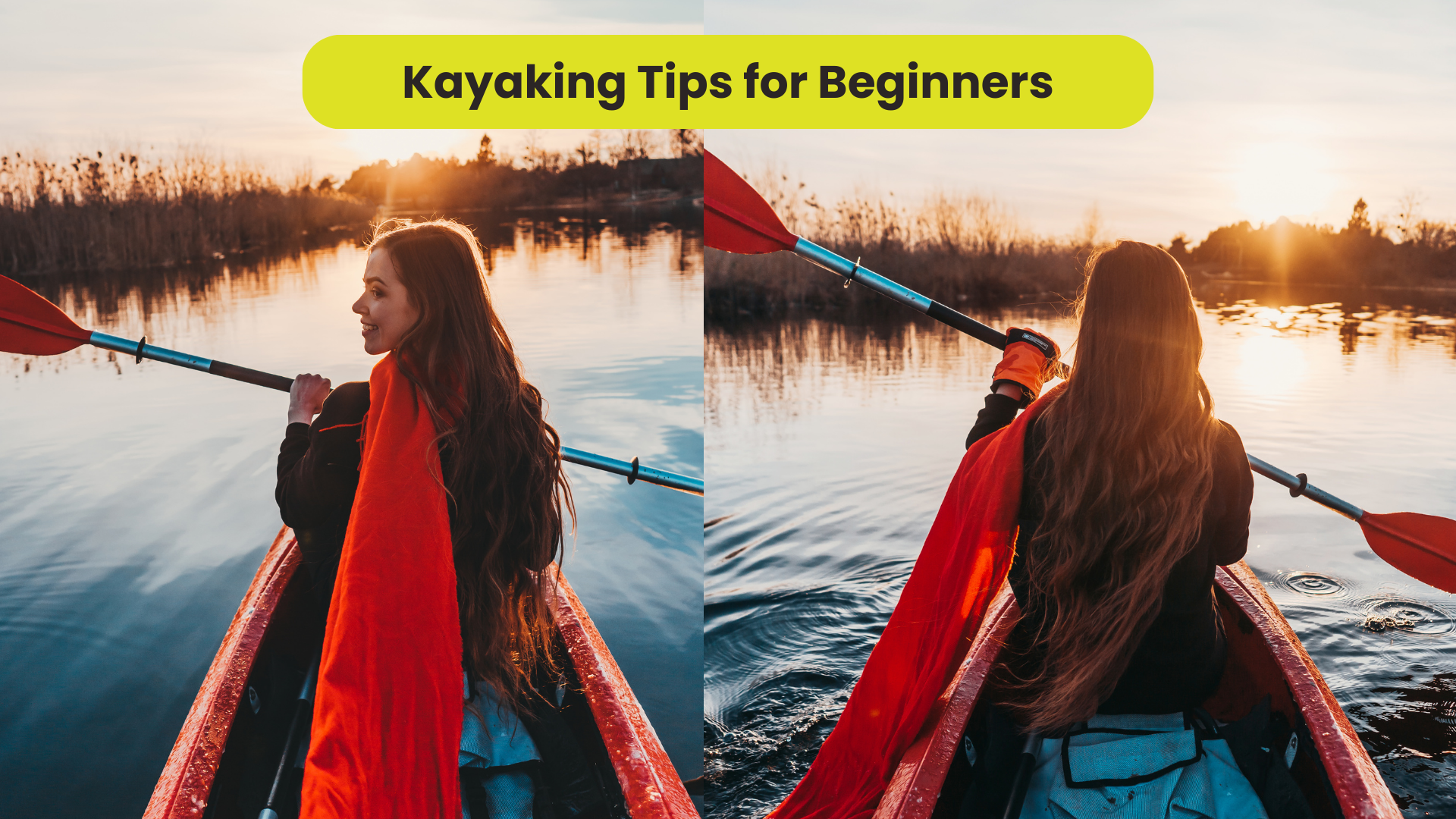Kayaking is a thrilling and exciting way to explore the great outdoors, but it may be scary for beginners. To make your kayaking experience as enjoyable and safe as possible, it’s vital to have a basic understanding of kayak selection, required gear, good paddling technique, safety precautions, and trip preparation.
Don’t worry if you’re new to kayaking! You’ll be paddling like a pro in no time if you have some fundamental understanding and practice. This guide will provide you with essential Kayaking Tips for Beginners to make your first kayaking experience a breeze.
Don’t worry if you’re new to kayaking! You’ll be paddling like a pro in no time if you have some fundamental understanding and practice.
Kayaking Tips for Beginners
When it comes to kayaking, choosing the right kayak is crucial for your comfort, safety, and overall enjoyment. Some important factors to consider include the type of water you’ll be kayaking in, your skill level, and your physical abilities. It’s also important to consider the size, weight, and storage options of the kayak.
Essential Gear for Kayaking Beginners

- Life jacket or personal flotation device (PFD)
- Kayak paddle
- Kayak
- Sun protection (e.g. sunscreen, hat, sunglasses)
- Waterproof bag or container for personal items
- Water bottle or hydration pack
- Proper footwear (e.g. water shoes, sandals, or sneakers that can get wet)
- Whistle for emergency signaling
- First aid kit
Proper Kayaking Technique

- Grip the paddle correctly with hands shoulder-width apart
- Use torso rotation to power your stroke
- Keep your arms straight and avoid bending at the elbows
- Maintain a relaxed grip on the paddle
- Keep your eyes on the horizon to help with balance
- Use a variety of strokes (e.g. forward, reverse, sweep, and draw) to control your kayak
- Practice proper posture and engage your core muscles
Tips for Staying Safe on the Water

- Always wear a PFD or life jacket
- Check weather conditions before heading out
- Avoid kayaking alone if possible
- Learn basic water rescue techniques
- Stay hydrated and protect yourself from the sun
- Be aware of potential hazards (e.g. rocks, logs, rapids)
- Let someone know your planned route and expected return time
- Carry a whistle or other emergency signaling device
Choosing the Right Kayak for Your Needs

- Consider the type of water you’ll be kayaking on (e.g. calm lake, river, ocean)
- Think about your experience level and skill level
- Decide on a budget for your kayak
- Choose between a sit-in or sit-on-top kayak
- Look for a kayak with comfortable seating and adequate storage space
- Consider the weight and size of the kayak for transportation and storage
Basic Navigation & How to Read the Water

- Look for currents and eddies in the water
- Observe the flow of the water to determine the direction and speed
- Pay attention to changes in water depth or color
- Look for landmarks or features on shore to help with navigation
- Use a compass or GPS device to stay on course
- Learn how to read nautical charts or maps
Getting Comfortable on the Water
- Start with calm, flat water to practice basic skills
- Take a kayak class or lesson to learn proper technique and safety tips
- Practice getting in and out of the kayak on land before heading to the water
- Gradually increase the difficulty of the water and terrain as your skills improve
- Paddle with more experienced kayakers to learn from their techniques and experience
- Don’t be afraid to ask questions and seek advice from other kayakers or instructors.
FAQ’s
Is kayaking hard for beginners?
Kayaking can be challenging for beginners, but it’s a fun and rewarding sport that can be enjoyed with practice and the right techniques.
What should a beginner kayaker know?
Beginner kayakers should know the basics of kayaking technique, safety rules, how to choose the right kayak and gear, and how to read the water.
How do I increase my stamina for kayaking?
To increase stamina for kayaking, beginners should start with short sessions and gradually increase the duration and intensity of their paddling. Incorporating other exercises, such as strength training, cardio, and stretching, can also help.
What do I need to prepare for kayaking?
To prepare for kayaking, beginners should have the right gear, including a kayak, paddle, personal flotation device, appropriate clothing, sunscreen, and water. They should also be familiar with the water conditions and weather forecast and have a basic knowledge of first aid.
What are the basic skills in kayaking?
The basic skills in kayaking include paddling technique, steering and maneuvering the kayak, balancing and maintaining stability, and self-rescue techniques.
Is kayaking good for beginners?
Kayaking is a great sport for beginners, as it is low-impact and can be adapted to different levels of skill and fitness. It also provides a fun way to explore nature and spend time on the water.
Conclusion
Kayaking is a great way to explore the outdoors and get some exercise, but it’s important to have some basic knowledge and practice proper technique and safety precautions. By following the tips outlined in this article, you’ll be well on your way to becoming a confident and skilled kayaker.

